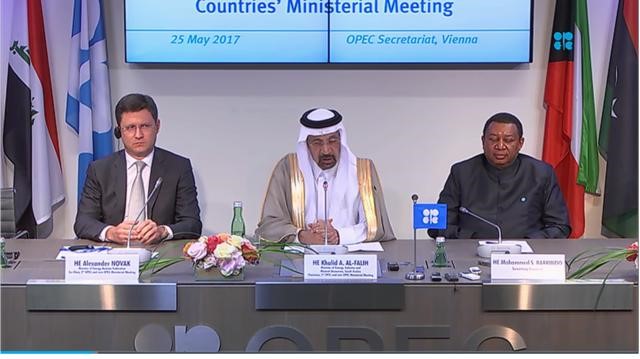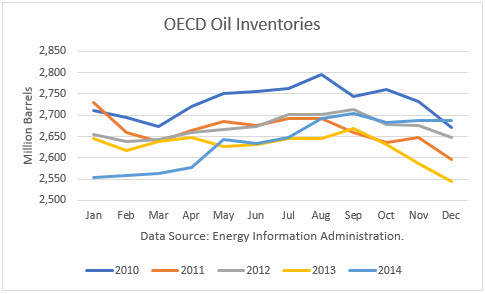
Oil prices peaked in this latest cycle at about $107/b in June 2014. Prices had dropped below $80/b by the OPEC meeting in November 2014, and OPEC had had enough of America's shale oil taking away their market share and declared a market share battle.
Prices dropped for more than a year before bottoming January 2015, and retesting that bottom again February. On Friday, February 12th, the March crude futures contract spiked 12.2% based on speculation of a possible OPEC agreement to cut oil production. Even though the four oil producers announced that they had tentatively agreed to "freeze" their production, the subsequent price increases have added a total of about $4 per barrel to the OPEC Basket Price.
Although OPEC has not cut one barrel of production, the market has altered its distribution of potential future oil prices, raising its probability-weighted expected value. The fact that OPEC and Russian producers are talking and have agreed to something has led the market to think there could be movement toward shoring up prices from their disastrously low levels.
OPEC seems to be learning this lesson. Venezuela oil minister Eulogio Del Pino Tweeted on Tuesday that "an expanded meeting of OPEC and non-OPEC producing countries that support production freeze will be held in mid-March." Such an announcement may ensure the price gains hold.
I had written on February 29th, 2016, ("OPEC Freeze Talk Is A Free Lunch"): Continue reading "OPEC Caught a Tiger By The Tail" →



